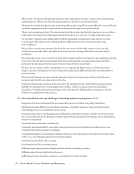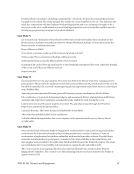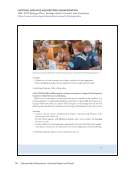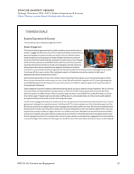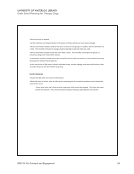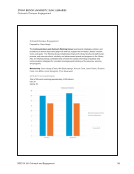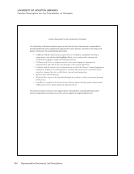92 Survey Results: Survey Questions and Responses We have various markers we look for, including quality and quantity as it relates to participation numbers. Case Study 21 One hundred fifty public librarians will be joining the Medical Library Association (MLA) annual meeting for a public health information symposium that runs concurrent with the last day and a half of MLA ‘18, including the Tuesday Silver and Gold Networking Dinner. MLA ‘18 attendees can attend symposium sessions as part of their meeting registration. The symposium, of interest to both public librarians and health sciences librarians, offers programming in the area of health information for the public. It also provides a unique opportunity for public and health sciences librarians to network. Approvers: Library administrator, department head. Strategic Partners: Medical Library Association and Public Library Association. Budget: $167,835. NLM staff, grantees, and strategic partners Through NNLM.gov, the Medical Libraries Association conference site, https://www.mlanet.org/page/ mla18-symposium, and the Public Library Association “Promoting Healthy Communities” initiative. NLM staff, grantees, and strategic partners. NLM staff involved oversee the grant-funded National Network of Libraries of Medicine (NNLM). NLM grantees proposed the project in partnership with MLA and PLA. MLA and PLA were selected as professional associations for health and public librarians. The evaluation online survey will include the standard Medical Library Association (MLA) evaluation questions, as well as integrate the evaluation tool from the NLM National Evaluation Office (nnlm.gov/ neo). Symposium participants will complete their evaluation on MLA’s learning management system (www.medlib-ed.org), in a workflow similar to all MLA CE evaluations, including those for NNLM courses that provide MLA CE. Symposium participants must complete the evaluation in order to receive credit for the CHIS. Final evaluation report was compiled based on participant survey. The final activity assessment indicated that the majority of participants strongly agreed that the event was effective in communicating the advances in precision medicine, raising awareness of health information resources, and learning what other libraries are doing for health programming. The assessment results are not shareable. Case Study 22 Open Access Day program: A free five-hour program that included a keynote, a panel, a demonstration, and more. It was open to all faculty, staff, students, and members of the community, and it included a continental breakfast and lunch. The dean had to approve the budget was approximately $2,000. This included travel for several of the speakers, honoraria, and meals. We have an open access committee that plans the event. The dean’s secretary also provides some support. On the Libraries’ website press release to university communications department on university’s news page emails to Libraries’ faculty, staff, students, and donors. One of the panels includes a speaker from ITS. Mainly a headcount and informal feedback. We plan to do more this year, including a feedback survey. Informal feedback was positive however, I would like to be more systematic about collecting feedback this year.













































































